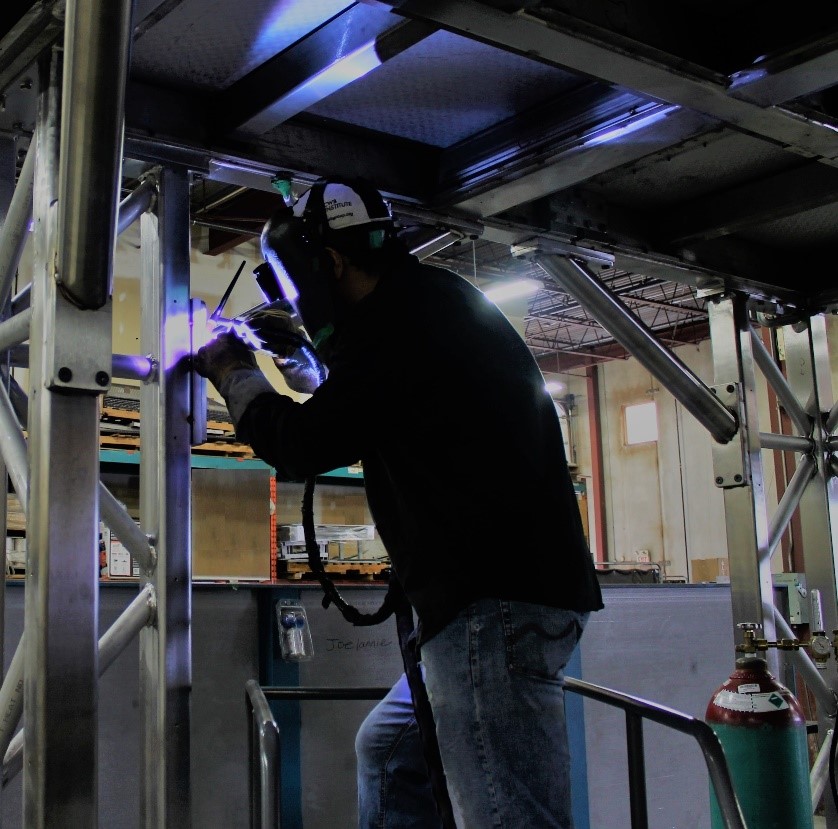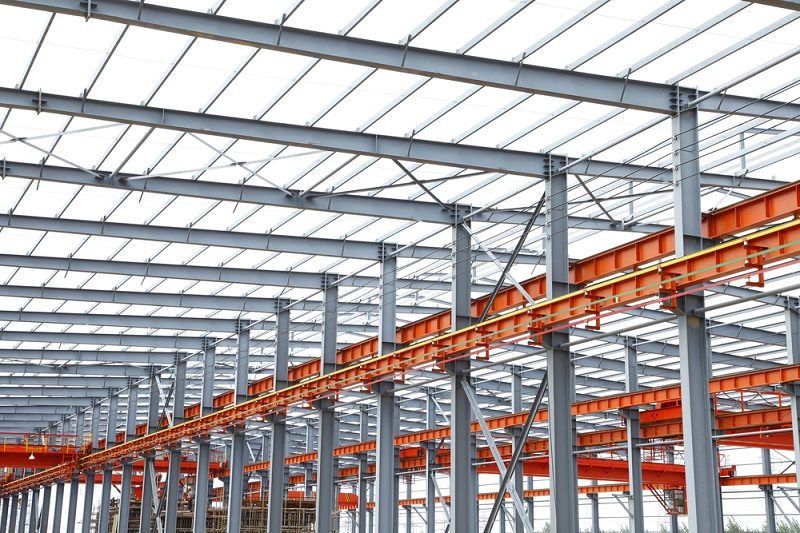Comprehensive Analysis of Cutting-Edge Techniques in Steel Fabrication Sector
As the steel manufacture industry proceeds to progress, the integration of cutting-edge strategies has actually become vital for remaining competitive and meeting the needs of modern production standards. From laser cutting innovations to the use of robotics and 3D printing in steel manufacturing, the landscape of construction techniques is quickly changing. With each innovation bringing its own collection of benefits and difficulties, a thorough analysis of these strategies is vital for business intending to improve their procedures, boost precision, and eventually, boost the high quality of their steel construction output. In this dynamic market where modern technology plays a critical duty, understanding the nuances of these advanced strategies is not just an option but a necessity for those seeking to forge ahead in the ever-evolving world of steel construction.
Laser Cutting Developments
In the world of steel manufacture, laser reducing improvements have actually reinvented the accuracy and effectiveness of metal shaping processes. By harnessing the power of concentrated laser beam of lights, suppliers can currently attain unparalleled degrees of precision when puncturing different kinds of steels. This modern technology makes it possible for complex styles to be performed with minimal product wastefulness, making it a cost-effective remedy for markets needing high precision parts.
Among the key advantages of laser cutting is its capacity to manage a wide variety of products, including stainless-steel, aluminum, and carbon steel, easily. The process generates tidy, burr-free sides, getting rid of the requirement for extra completing actions. In addition, the non-contact nature of laser reducing reduces the threat of material contamination, causing better output.
Furthermore, laser reducing machines can be set to make swift, exact cuts, substantially minimizing production time compared to standard reducing approaches. This speed and accuracy make laser cutting especially suitable for mass manufacturing environments where performance is critical. As modern technology remains to breakthrough, laser cutting is poised to play a progressively vital duty in the steel construction sector.

CNC Machining Innovations
The advancement of CNC machining technologies has introduced a new period of precision and effectiveness in the steel construction industry. Computer System Numerical Control (CNC) devices have actually revolutionized steel fabrication by offering unmatched precision and repeatability in the manufacturing process. steel fabricators melbourne. One of the crucial innovations in CNC machining is the combination of innovative software application systems that make it possible for real-time monitoring and adjustments, resulting in boosted efficiency and high quality control
Moreover, the advancement of multi-axis CNC machines has actually permitted the construction of intricate steel components with complex styles that were previously challenging to generate. These makers can carry out a wide variety of machining procedures, consisting of milling, drilling, transforming, and grinding, all with high levels of precision.
Moreover, the unification of automation and robotics in CNC machining has structured manufacturing procedures, lowered preparations, and minimized the margin of mistake. This assimilation of sophisticated innovations not just enhances effectiveness however additionally makes certain consistent quality across all made steel parts. In conclusion, CNC machining developments continue to drive advancements in the steel manufacture industry, establishing new criteria for precision and productivity.
Automated Welding Technologies
Automated welding technologies have transformed the steel construction sector, boosting performance and precision in the welding process. These innovative technologies make use of computer-controlled systems to automate the welding process, resulting in higher performance levels and enhanced weld high quality. One of the vital benefits of automated welding is the capability to perform intricate welds with regular accuracy, decreasing the chance of errors and revamp.
Robot welding systems go to the center of automated welding technologies, supplying unmatched speed and precision. These systems can take care of a wide variety of welding tasks, from easy to detailed, with ease (metal fabrication melbourne). By making use of innovative sensing units and software program, robot welders can adapt to variations in product and joint geometry, guaranteeing an uniform and trustworthy weld
In addition, automated welding technologies boost workplace safety by lessening the direct exposure of human welders to hazardous fumes and extreme warmth. As the steel fabrication market remains to evolve, integrating automated welding innovations will be essential for companies looking to stay competitive and meet the growing needs for high-grade bonded products.
Robotics Integration in Construction
Using robotic systems in manufacture processes has ended up being a pivotal method for boosting efficiency and precision in modern-day production atmospheres. Robotics integration in steel construction provides a myriad of advantages, consisting of increased performance, improved quality assurance, and improved safety measures. These advanced robotic systems great site are geared up with sophisticated sensing units and programming abilities, allowing them to execute elaborate jobs with a high level of web link precision and repeatability.
Among the vital advantages of robotics integration in steel construction is the ability to automate repetitive jobs, such as product handling, reducing, welding, and setting up procedures. This not only speeds up production cycles yet also decreases the danger of human mistake, bring about higher overall product high quality. Furthermore, robots can operate 24/7, substantially enhancing production result and meeting limited task deadlines.

3D Printing in Steel Manufacturing
Having changed the steel fabrication market through robotics integration, the expanding expedition of 3D printing in steel production is positioned to further development the realm of modern-day manufacturing methods. 3D printing, likewise called additive production, offers extraordinary layout liberty and intricacy, allowing the production of intricate steel structures that were previously unattainable via traditional production methods. By utilizing computer-aided layout (CAD) software, producers can precisely manage the layer-by-layer deposition of steel material, resulting in get rid of enhanced geometries and performances.
One of the vital advantages of 3D printing in steel production is its capacity to decrease product waste substantially. Unlike subtractive production procedures where excess material is trimmed away, 3D printing only uses the essential quantity of steel required for the final part. This performance not investigate this site just causes cost financial savings but likewise straightens with sustainable production methods by minimizing ecological impact.
Furthermore, 3D printing allows rapid prototyping and personalization, enabling for the manufacturing of little sets of complex steel components with brief lead times. As the innovation remains to mature and become extra easily accessible, its integration into mainstream steel manufacture processes is anticipated to drive development and effectiveness throughout the industry.
Verdict
In conclusion, the steel construction market has seen significant developments in methods such as laser cutting, CNC machining, automated welding, robotics integration, and 3D printing. These innovative innovations have actually revolutionized the means steel products are produced, causing increased accuracy, cost-effectiveness, and performance. Continued financial investment in these ingenious strategies is crucial for the sector to stay competitive and satisfy the demands of contemporary production procedures.
As the steel fabrication industry proceeds to evolve, the combination of advanced methods has actually come to be essential for staying affordable and meeting the needs of modern-day production criteria.One of the vital benefits of laser cutting is its capability to deal with a vast range of materials, consisting of stainless steel, aluminum, and carbon steel, with ease.Automated welding modern technologies have changed the steel fabrication sector, enhancing performance and accuracy in the welding procedure.Having actually changed the steel manufacture industry via robotics combination, the expanding exploration of 3D printing in steel production is positioned to further advance the realm of contemporary production methods.In verdict, the steel manufacture industry has actually seen considerable developments in strategies such as laser cutting, CNC machining, automated welding, robotics assimilation, and 3D printing.